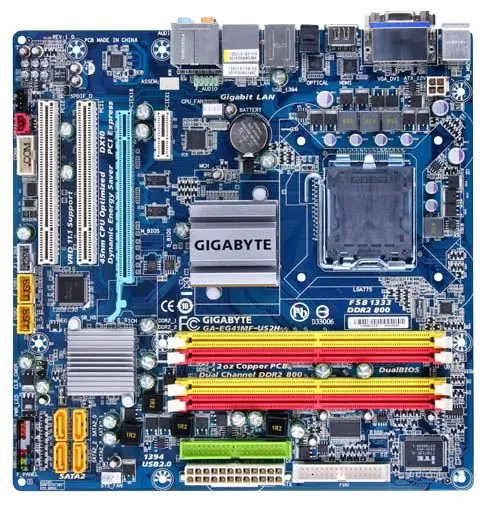Very often, having bought an already assembled system unit, the user wonders what kind of motherboard is installed in the purchased computer, and what equipment is on it. How to be in such a situation?

It is necessary
Computer, Everest software, screwdriver
Instructions
Step 1
The easiest way to understand which motherboard is installed in the computer is to take a screwdriver, unscrew a couple of screws, remove the side case cover and look at the markings that are indicated on the board itself. Most often, the name of the model and the manufacturer's company is indicated on its upper side. However, most often the computer case is sealed and, in case of violation of the integrity of the stickers, the warranty will be lost.
Step 2
You can pay attention to the display during the initial boot of the computer, when, among other information about the system parameters, an inscription appears with the name of the manufacturer and the model marking of this motherboard like “ASUS A7N-8X” or “GIGABYTE GA-5436AL”.
Step 3
The most correct way would be to use one of the utilities that identify all computer hardware and allow you to determine complete information about the system as a whole, and about all its components. The most popular programs in this series are Everest, Aida, and SiSoftware Sandra. It should be noted that Everest is the most informative and user-friendly of all of the above. So, install Everest on your computer and start it up. Further in the program window, on the left side of it, we see a menu, in which, among other things, there is an item "Motherboard", in which there is a sub-item with the same name. By clicking on it, in the right area of the screen, detailed information about the motherboard will be displayed, including its main parameters, characteristics, properties, as well as the name of the model and manufacturer.
Step 4
At the same time, the program allows you to find out the most complete information about the equipment installed on the board: south and north bridges, socket type, memory and interface controllers, built-in network, audio and video adapters, as well as information about possible problems detected during its operation.






